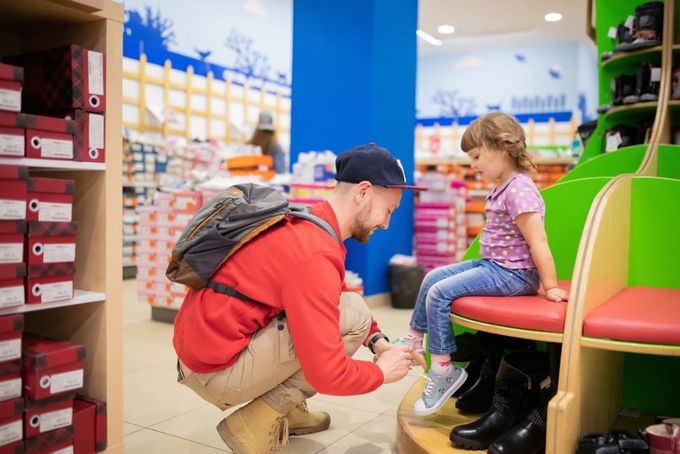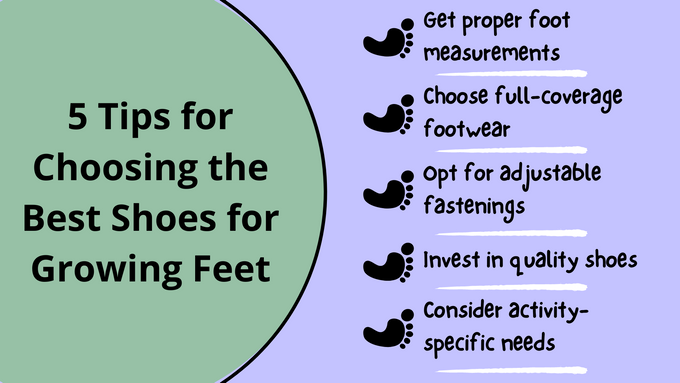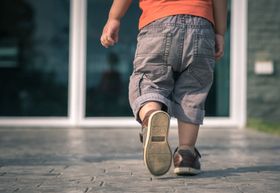How to Choose Kids' Shoes for Different Stages of Foot Development
Selecting the right shoes for your child isn't just about style; it's about setting the foundation for healthy foot development.
Published June 18, 2024

As children mature, their feet undergo various stages of development, each with unique needs and considerations. From infancy to adolescence, the type of footwear you select can significantly impact your child's mobility, stability, and even confidence.
Below, we outline key factors to consider when deciding on the best shoes for growing feet. We also offer advice on when to replace shoes and how to include your youngster in these decisions.
» Browse through our colourful selection of orthopaedic sandals and sneakers
Why Developing Children Need the Right Shoes
When it comes to children's shoes, the right fit is essential. Shoes that are too small can hinder foot development, cause problems like tripping and ankle pain, and even affect sleep and overall growth.
Retailers usually recommend leaving some space for expansion in the shoe. This allows for healthy foot progression and supports their physical activities like running and climbing.
If you have medical concerns, consult your kid's doctor. Conditions like bow legs, nail problems, and flat feet are rare but should be addressed by a medical professional. For shoe-related concerns, ask your local retailer for advice.
» Learn more about the effects of improperly sized shoes on children
5 Tips for Choosing the Best Shoes for Growing Feet
Follow these five tips to choose the right shoes for your little one's developing feet:
- Take your child to a retailer for proper foot measurement and personalised recommendations.
- Favour shoes that cover the entire foot, with room for movement and growth.
- Look for adjustable fastenings, such as laces, to achieve a better fit.
- Invest in high-quality shoes; they may be more expensive but last longer.
- Consider the specific needs of each activity, like having different shoes made from materials for the beach or the playground.
» Prioritise proper fit with this online shoe shopping guide for kids
Selecting Footwear for Early Childhood
When selecting footwear for early childhood, there are several factors to consider. First, think about your little one's ability to tie their own shoes. Younger tots may not have the dexterity or patience to deal with laces, so alternatives like shoes with Velcro straps can make getting shoes on and off much easier.
Second, choose shoes your youngster can put on and take off independently. This will save you time and effort and help your child develop a sense of autonomy and self-confidence.
Also, prioritise durability. Look for footwear made from sturdy fabrics that can withstand the wear and tear of daily use—whether it's running around the playground, climbing on furniture, or exploring the great outdoors.
» Learn how to find the perfect all-season shoes for your little one
As children grow, their footwear needs change. For example, preschoolers might start learning to tie shoelaces, which increases their independence and choice of footwear.
» Find the ideal shoes for 18-month-olds
Picking Shoes for School-Aged Children and Adolescents
Kids can manage more types of shoes and often prefer more independence as they mature. When picking shoes for school-aged children and adolescents:
- Ensure that the shoes are made of appropriate, sturdy materials that can withstand the rigours of daily wear
- Consider your youngster's ability to manage shoe fastenings—older children can handle shoelaces
- Prioritise safety by avoiding shoes that can cause tripping if not properly fastened
» Want to keep your kids moving safely? Try these fixes for loose shoelaces
Always select shoes based on their intended use. For school, pick appropriate shoes that meet the dress code requirements—which often means black shoes in the UK. You want to find a balance between style and practicality so the shoes are comfortable enough to wear throughout the school day.
» Fuse style and comfort with our top kids' shoes for school
Additionally, choose structured shoes that stay securely on the feet for active pursuits like cycling, climbing, or other sports. You want shoes with built-in arch support, sturdy soles, good traction, and a snug fit that allows for freedom of movement.
» Which is better? Regular shoes vs. supportive shoes for kids
Note: Children's feet grow rapidly, so check shoe sizes every three to six months to ensure proper fit and avoid potential foot injuries, like bent toes and ankle sprains.
» Find out how often you need to replace your kid's shoes
Safety and Design in Kids' Shoes
When it comes to your little ones' shoes, safety and design go hand in hand. Here are some key features that'll help your kiddos feel more at ease and keep their feet healthy.
Flexible Shoes for Natural Foot Movement
Flexible shoes are crucial for growing children as they allow natural foot movement. This composition enables kids to run, do ankle training, and navigate stairs without hindrance. Such natural agility is vital for their physical development, exercise, and energy use, which in turn sustains a healthy sleep cycle.
» Uncover the different ways adaptive footwear can help your kid
Common flexible fabrics for kids' shoes include leather, rubber, and plastic.
Non-Slip Shoes and Wide Toe Boxes
Non-slip shoes offer stability, which is especially important for children learning to walk and run. Additionally, wide toe boxes supply extra space, making it easier for youngsters to move and preventing their toes from being squashed.
» Say goodbye to squeezed feet with these 10 best wide shoes for kids
Durable Materials and Supportive Midsoles
Active kids need shoes with hard-wearing textiles and supportive midsoles. These features provide strength and shock absorption. In turn, they help shoes withstand various surfaces and endeavours while encouraging foot health.
» Discover the top sturdy and supportive kids' sneakers for active playtimes
Athletic Shoes for Specific Activities
Athletic shoes are ideal for activities like running. They offer better ventilation, cushioning, and support. These shoes also give the necessary flexibility for different sports and can help prevent injuries such as ankle sprains.
» Explore the top shock-absorbing shoes for kids who love to run and play
Cushioned Insoles and Reinforced Heel Counters
Cushioned insoles bolster the foot and ensure stability, which reduces the likelihood of tripping during adventures. Additionally, if you're looking for extra safety, opt for reinforced heel counters. They fill gaps between the heel and the shoe so the shoes aren't too loose.
» Boost your little one's ankle strength with these 10 best high top shoes for boys
Choose High-Quality Shoes for Every Stage of Growth
Whether your child is just starting to walk or is an active adolescent, high-quality, well-designed shoes can greatly benefit their foot health and development. By considering proper fit, material durability, and age-appropriate composition, you can ensure that your youngster's feet are supported and protected as they grow.
» Browse through our best shoes for baby foot development





